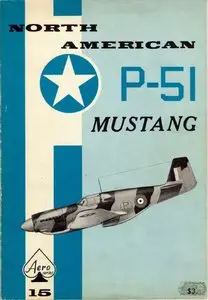North American P-51 Mustang (Aero Series 15) By Edward T. Maloney, Uwe Feist
Publisher: Aero Publishers 1981 | 51 Pages | ISBN: 0830686479 | PDF | 18 MB
Publisher: Aero Publishers 1981 | 51 Pages | ISBN: 0830686479 | PDF | 18 MB
The American Mustang fighter of World War II was an aerial dark horse. It was built entirely from information garnered from the battlefield. Packed into its trim airframe were more radical ideas than any single airplane in the history of fighter aircraft. Yet it was blended so subtly that our own Air Force at first passed this ship off as just another untried aircraft. In the spring of 1940, Great Britain was fighting for its life in the air war over Europe. A special British Purchasing Commission was sent to the United States to buy badly needed aircraft. One day the Commission conferred with "Dutch" Kindelberger who was president of a relatively new airplane company on the West Coast. The English representatives wanted Kindelberger to build the Curtiss P-40 "Kittyhawk" fighter under license. Kindelberger did not believe this aircraft was suitable for combat over Europe against the highly maneuverable German Messerschmitt Bf-109 fighter and he told the commission he preferred to design and build a new fighter—one that would incorporate all the lessons learned from the battlefield. The Commission protested, stating their need was now and not two years hence, the amount of time normally required for this task. Kindelberger gave a blunt reply, "Give me 120 days and you'll have your fighter!" The British Commission officials just smiled but left their forwarding address just in case their specifications for this 120-day miracle fighter came about. Kindelberger headed West with his new contract. He assigned Edgar Schmued as chief design engineer; however, many engineers participated in the design. The basic engineering problem was to design a fighter that would outperform its Axis rival in maneuverability and top speed. Wind tunnel tests showed that shock waves were the largest problem affecting speed. A new wing was designed incorporating the new laminar flow wing. The aircraft was to be powered by an Allison 12-cylinder, liquid-cooled Vee engine. It was also designed with a belly mounted ram intake. The trim fuselage lines were created in record time by a purely mathematical system known as development of secondary degree curves. This new system gave designers the best absolute system for determining the best streamlining between two given points. The Royal Air Force designated this North American NA-73 design the Mustang I. The first airplane was completed in the fall of 1940 and was tested during the winter of 1940. Full production was immediately ordered in the spring of 1941. News of its advance performance attracted the Air Material Command of the Army Air Force and an order was issued to procure one for tests at Wright Field. The fifth production Mustang became the first of two XP-51 "Apache's". Little interest was shown at first by the Air Force, as current fighter policy was based on the Curtiss P-40 and Bell P-39 airplanes. New upcoming design plans were based on the Lockheed P-38 and Republic P-47.



